Explore Nyanga - Zimbabwe Travel, Africa
Nyanga, nestled in Zimbabwe's breathtaking Eastern Highlands, is a destination that promises awe-inspiring natural beauty and rich cultural experiences. Known for its stunning landscapes and serene environment, Nyanga offers a refreshing escape from the bustle of city life. Whether you're an avid nature lover, an adventure seeker, or someone eager to immerse yourself in local culture, Nyanga has something special for you. With its lush mountain ranges, vibrant local traditions, and diverse activities, this hidden gem is an ideal spot for your next travel adventure.
Population: Approximately 58,000 in 2011.
Economy: Nyanga’s economy thrives on agriculture, tourism, and small-scale trade. Farming, particularly of crops and livestock, alongside eco-tourism, supports local livelihoods and drives economic activity.
Landmarks: Famous for the Nyanga National Park, Mutarazi Falls, and the World’s View.
Zimbabwe
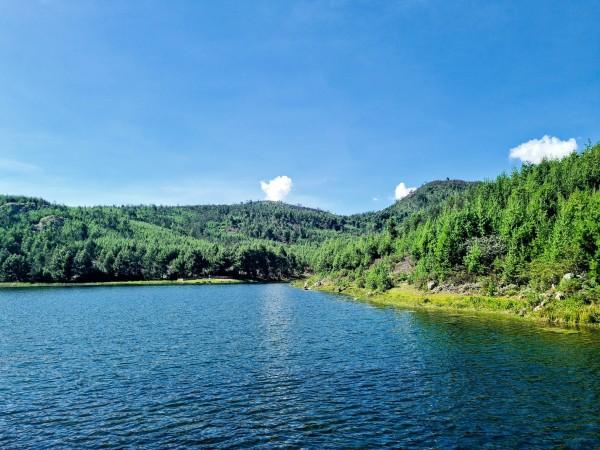
Overview of Nyanga
History & Culture Influence
Nyanga is a region steeped in history and culture. The area's history stretches back to the ancient Shona civilization, which left a lasting impact on the region's cultural landscape. The Shona people, known for their intricate stonework and vibrant traditions, have shaped Nyanga's cultural identity. During the colonial era, Nyanga became a significant site due to its strategic location and natural resources. This period introduced new influences while blending with the existing Shona traditions to create a unique cultural tapestry. Today, Nyanga’s history is reflected in its architecture, traditional ceremonies, and local art. Visitors can explore ancient ruins like the Great Zimbabwe Ruins and experience traditional music and dance that celebrate the region's heritage.
Interaction with the Locals
Nyanga, a picturesque town in Zimbabwe's Eastern Highlands, is home to a vibrant and diverse community. The town is predominantly inhabited by the Shona people, who are known for their rich cultural traditions and warm hospitality. The local community plays a crucial role in preserving Nyanga's heritage and welcoming visitors with genuine friendliness. This close-knit population contributes to the region's unique charm and cultural depth, making it an inviting destination for travelers.
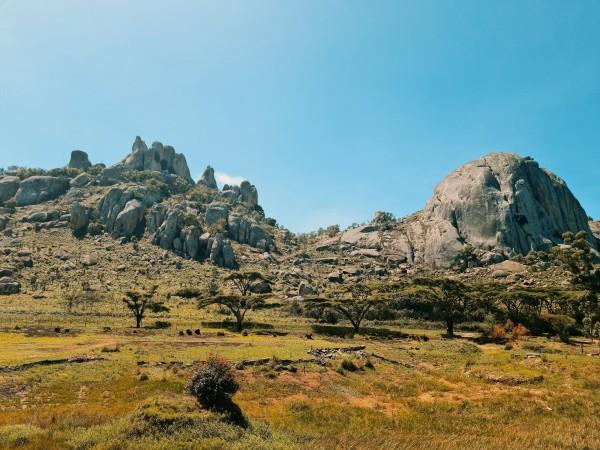
Nyanga National Park - © Rutendo Petros
Top Attractions in Nyanga
Nyanga’s top attractions offer an array of experiences that showcase the region’s natural beauty and unique charm. These attractions capture the essence of Nyanga’s natural splendor and offer a variety of ways to explore and appreciate the region’s unique environment.
Nyanga National Park
This expansive park is a paradise for nature lovers and outdoor enthusiasts. It has a varied ecology, ranging from lush woods to harsh peaks. The park is home to Mount Nyangani, Zimbabwe’s highest peak, which offers breathtaking panoramic views and challenging hiking trails. Visitors can also explore the park’s rich wildlife, including antelope and various bird species, while enjoying serene landscapes and refreshing mountain air.
Mutarazi Falls
Renowned for its impressive height and dramatic beauty, Mutarazi Falls is a must-see natural wonder. The falls cascade over rugged cliffs into a deep pool below, surrounded by lush vegetation. The region has breathtaking views and a tranquil atmosphere, ideal for a leisurely visit or a refreshing plunge in the cold waters.
World’s View
For those seeking breathtaking vistas, World’s View is the ideal destination. This scenic viewpoint provides expansive views of the Eastern Highlands, including rolling hills and verdant valleys. It’s an excellent spot for photography and enjoying the tranquil beauty of Nyanga’s landscape.
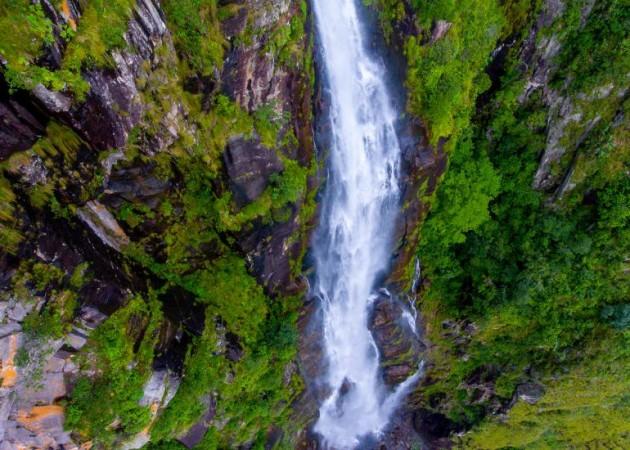
Mutarazi Falls - © Zimbabwe Tourism
Must-Try Dishes in Nyanga
Nyanga’s culinary tradition is a delightful reflection of Zimbabwean cuisine, offering a range of traditional dishes that are both flavorful and satisfying. Sampling these dishes provides a true taste of Nyanga’s culinary heritage, allowing visitors to experience the authentic flavors of Zimbabwean cuisine.
- Sadza: A staple in Zimbabwean cuisine, sadza is a thick maize porridge often served as the base for a variety of dishes. It pairs perfectly with meats, vegetables, and stews, making it a central part of any meal in Nyanga.
- Nyama: Nyama refers to meat, commonly beef, goat, or chicken, cooked with spices and herbs. It is often grilled or stewed, offering a rich and savory taste that complements the mild flavor of sadza.
- Kapenta: These small, dried fish are a popular delicacy in Nyanga. Kapenta is typically fried and served with vegetables or added to stews, providing a unique and savory flavor that enhances local dishes.
- Mopane Worms: These protein-rich insects are a traditional snack in Zimbabwe. Prepared by drying or frying, mopane worms are a crunchy and flavorful treat that reflects the region’s diverse culinary practices.
- Vegetable Stews: Nyanga’s vegetable stews are often made with locally grown produce like tomatoes, spinach, and onions. These stews are seasoned with traditional spices and served as a side dish or a main meal.

Kapenta - © Shumba Africa
Festivals & Local Celebrations
Nyanga’s vibrant festivals and local celebrations provide a deep dive into the cultural richness of Zimbabwe’s Eastern Highlands. Each of these festivals and celebrations offers a unique opportunity to engage with Nyanga’s local culture, making them a must-experience for anyone visiting the region.
Harvest Festivals
These festivals celebrate the end of the agricultural season and the successful harvest. Held annually in late summer, they feature a variety of traditional activities such as communal feasts, dancing, and music performances. The festivals are marked by colorful traditional attire and lively gatherings where locals express their gratitude through rituals and songs. This celebration offers visitors a chance to witness and participate in the local customs that honor the fruits of their labor.
Shona Ceremonies
Throughout the year, Nyanga hosts various Shona ceremonies that are integral to the community’s cultural practices. These ceremonies frequently commemorate key life events like births, weddings, and deaths, and they incorporate traditional rites and customs. Attendees can experience drumming, chanting, and storytelling that convey ancient myths and legends. The ceremonies provide a rich insight into the Shona people’s spiritual and cultural beliefs, offering an immersive cultural experience.
Cultural Music Festivals
Nyanga is renowned for its cultural music festivals, which highlight the region’s traditional music and dance. One notable festival is the Nyanga Music Festival, which takes place annually and features performances by local musicians and dancers. The festival is a vibrant celebration of Shona music, including genres like mbira (thumb piano) and marimba (wooden percussion). Visitors can enjoy energetic dance performances, join in traditional dances, and experience the rhythmic beats that are central to Shona culture.

Shona Ceremonies - © African Crafts Market
What to Do in Nyanga
- Hiking in Nyanga National Park: Explore the scenic trails of Nyanga National Park and the surrounding mountains. Popular hikes include the trek to Mount Nyangani and walks through lush forests, where you can enjoy stunning views and diverse wildlife.
- Fishing in Nyanga: Nyanga is known for its excellent fishing spots, particularly in the area's lakes and rivers. Enjoy trout fishing in the pristine waters of Nyanga, where the cool climate and clear waters create ideal conditions for this relaxing activity.
- Birdwatching in Nyanga: The diverse ecosystems of Nyanga attract a variety of bird species. Birdwatchers can spot numerous birds, including the rare Black Eagle and various endemic species, making it a prime destination for avian enthusiasts.
- Cultural Tours: Engage with local communities and learn about traditional Shona culture through guided tours. These tours often include visits to local villages, cultural workshops, and opportunities to participate in traditional ceremonies.
Shopping in Nyanga
- Local Markets: Nyanga’s markets are bustling with activity and provide a range of goods from fresh produce to traditional crafts. Explore these markets to find unique items such as Shona carvings, woven baskets, and colorful textiles.
- Handcrafted Art Stores: Nyanga is renowned for its handcrafted art, including intricate stone sculptures and wooden carvings. These pieces are often made by local artisans and reflect the region’s rich cultural heritage.
- Traditional Textiles Stores: Purchase traditional Zimbabwean textiles, such as brightly colored fabrics and hand-woven items. These textiles are often used in traditional clothing and home décor, offering a tangible connection to Nyanga’s cultural traditions.
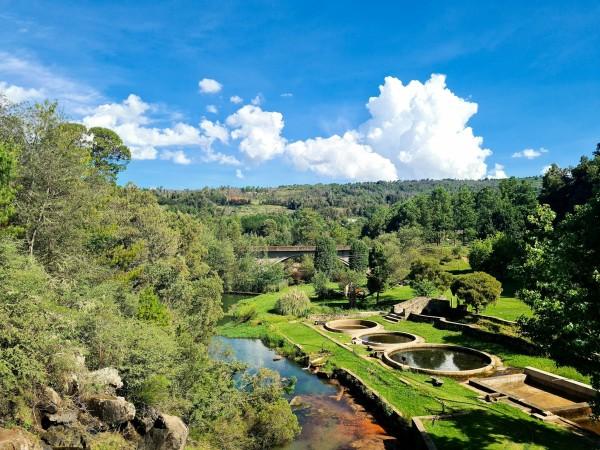
Uncover all the best of Nyanga - © Rutendo Petros
Weather in Nyanga: Best Time to Visit
Spring in Nyanga
Spring sees a gradual warming of temperatures and increased rainfall, with temperatures ranging from 15°C to 25°C (59°F to 77°F). The landscape begins to bloom, making it a beautiful time for photography and nature exploration. The rejuvenated vegetation and blooming flowers enhance the beauty of Nyanga National Park and the surrounding areas, providing a picturesque backdrop for outdoor activities and cultural experiences.
Summer in Nyanga
Nyanga's summer temperatures range from 20°C to 25°C (68°F to 77°F). This period is characterized by frequent, light rain showers that enhance the lush green landscape, making it an excellent time for hiking and nature walks. The vibrant scenery and cooler temperatures are ideal for exploring the extensive trails in Nyanga National Park and visiting attractions like Mutarazi Falls. Summer also coincides with the harvest festivals, providing visitors with an opportunity to experience local cultural celebrations and community events.
Autumn in Nyanga
Autumn brings colder, drier weather, with temperatures falling to between 10°C and 20°C (50°F to 68°F). This season is perfect for outdoor activities like birdwatching and fishing, as the dry conditions provide clear visibility and excellent fishing opportunities in the region’s lakes. The crisp air and reduced rainfall make autumn an ideal time for exploring the scenic viewpoints and enjoying the tranquil beauty of Nyanga’s landscapes.
Winter in Nyanga
Winter in Nyanga is dry with temperature ranging from 10°C to 20°C (50°F to 68°F). The sunny weather and cooler temperatures are great for hiking and adventure activities. Winter is also a popular time for visitors who enjoy cooler temperatures while exploring the area's natural wonders and participating in cultural tours. The clear skies offer excellent visibility for panoramic views from spots like World’s View.
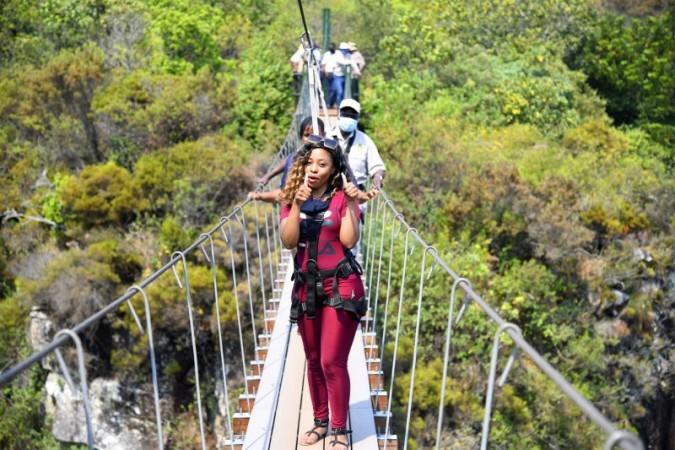
Experience the breathtaking natural beauty of Nyanga - © Zimbabwe Tourism
Essential Travel Information
Getting Around Nyanga
- Private Vehicles: Renting a car is a popular option for exploring Nyanga at your own pace. The region has well-maintained roads, and having a private vehicle allows for flexible travel to various attractions and remote areas.
- Public Buses and Minibuses: Public buses and minibuses operate between Nyanga and major cities such as Harare and Mutare. These are cost-effective options for travelers looking to explore the area without a private vehicle.
- Taxis: In Nyanga, local taxis are available for short trips and local transportation. They are a convenient way to get around town and reach specific destinations.
ATM & Banking Services
In Nyanga, managing your finances is straightforward with readily available ATM and banking services. ATMs are conveniently located around the town center, providing easy access to cash and supporting major international networks for card withdrawals. For broader financial needs, local banks offer a range of services including currency exchange, cash withdrawals, and general banking transactions during regular business hours. While the local currency is the Zimbabwean dollar, US dollars are also commonly accepted, making it helpful to carry both for various transactions.
Where to Stay in Nyanga
- Luxury Hotels: For those seeking premium comfort, luxury lodges provide high-end amenities and breathtaking views. These lodges often feature spacious rooms, gourmet dining options, and exclusive services such as guided tours and spa treatments, perfect for a lavish and relaxing experience.
- Mid-Range Hotels: Mid-range hotels strike a balance between comfort and affordability. These establishments offer essential amenities like well-appointed rooms, friendly service, and convenient locations, making them ideal for travelers looking for a comfortable yet budget-conscious stay.
- Guesthouses: Guesthouses and bed-and-breakfasts offer a more intimate and homely atmosphere. They typically provide personalized service, local insights, and cozy accommodations at a more economical rate, creating a welcoming environment for visitors.
Articles for you

Explore Yala National Park - Sri Lanka Travel, Asia
Tucked away in Sri Lanka’s southeastern corner, Yala National Park is where wild nature meets deep tradition. Known worldwide for its leopard population, the park is also home to elephants, sloth bears, crocodiles, and hundreds of bird species. Beyond wildlife, Yala opens doors to a cultural landscape dotted with ancient temples, Buddhist ruins, and coastal villages. For travelers seeking more than just a safari, Yala offers a chance to explore eco-tourism, local communities, and sacred heritage sites.
Population: The Yala National Park area doesn’t have a human population.
Economy: The economy around Yala National Park thrives on a blend of eco-tourism, agriculture, and local services. Safari tours, eco-lodges, and cultural experiences drive steady income for nearby towns like Tissamaharama and Kataragama, supporting thousands of families.
Landmarks: Famous for Block I of Yala and wildlife encounters, including elephants, sloth bears, crocodiles, and exotic bird species.

Explore Galle - Sri Lanka Travel, Asia
Nestled on Sri Lanka’s southern coastline, Galle is a vibrant city where history meets the sea. Its cobbled streets, colonial architecture, and serene beaches make it a must-visit destination for travelers seeking a blend of culture, adventure, and relaxation. A UNESCO World Heritage site, Galle captivates visitors with its Dutch Fort, bustling markets, and friendly locals. Whether you’re exploring the ramparts at sunset or savoring fresh seafood by the shore, Galle promises an unforgettable journey into Sri Lanka’s heritage.
Population: Approximately 113,000 in 2023.
Economy: Galle’s economy thrives on tourism, trade, and fisheries. The city’s historic fort, colonial architecture, and coastal charm draw thousands of international visitors each year, making tourism its main economic driver. Fishing remains vital for local livelihoods, supplying fresh seafood across the region.
Landmarks: Famous for the Galle Fort, Dutch Reformed Church & Maritime Museum, and Unawatuna Beach.

Explore Bentota - Sri Lanka Travel, Asia
Nestled along Sri Lanka’s southwestern coast, Bentota is a tropical paradise that blends golden beaches, vibrant culture, and thrilling adventures. Famous for its calm waters, luxury resorts, and scenic river estuary, Bentota has become a top destination for travelers seeking both relaxation and authentic experiences. From serene beach walks at sunrise to adrenaline-pumping water sports, this coastal town offers a perfect balance of leisure and exploration. With its proximity to Colombo and Galle, Bentota is easy to reach, making it an ideal stop for both short escapes and extended holidays.
Population: Approximately 37,000 in 2023.
Economy: Bentota’s economy thrives mainly on tourism, which drives local businesses such as hotels, restaurants, and wellness retreats. The town also benefits from fishing, coconut cultivation, and handicrafts like wood carving and batik textiles. Many residents rely on the growing demand for water sports and Ayurvedic treatments, making tourism the backbone of both income and employment in the area.
Landmarks: Famous for Bentota Beach, Bentota River Safari, and Kande Vihara Temple.

Explore Mirissa - Sri Lanka Travel, Asia
Mirissa is a charming coastal town on Sri Lanka’s southern shoreline. Known for its golden beaches, turquoise waters, and vibrant marine life, it has become a must-visit stop for travelers exploring the island. Many come for whale watching, surfing, and sunset views at Coconut Tree Hill, but Mirissa offers much more than postcard beauty. The fishing boats you see anchored by the bay carry generations of stories. Local traditions, delicious cuisine, and a laid-back rhythm of life shape every visitor’s experience.
Population: Approximately 4,700 in 2023.
Economy: Mirissa’s economy is largely shaped by its coastal location. Fishing has long been the backbone of local livelihoods, with generations relying on the Indian Ocean for income. In recent decades, tourism has become the main driver of growth, thanks to whale watching, surfing, and beachside hospitality.
Landmarks: Famous for Mirissa Beach, Coconut Tree Hill, and Parrot Rock Bridge.

Explore Nuwara Eliya - Sri Lanka Travel, Asia
Tucked away in the Central Highlands of Sri Lanka, Nuwara Eliya is often called “Little England”. With its rolling tea plantations, cool misty mornings, and colonial charm, this mountain town feels like a step into another world. Travelers come here to breathe fresh air, walk through flower gardens, sip the finest Ceylon Tea, and enjoy a pace of life far from the island’s busy cities. Whether you’re drawn by scenic landscapes, heritage architecture, or the warmth of its people, Nuwara Eliya is a destination that blends nature, culture, and history in perfect harmony.
Population: Approximately 781,000 in 2023.
Economy: Nuwara Eliya’s economy thrives mainly on tea production, as it sits in the heart of Sri Lanka’s central highlands, famous worldwide for Ceylon Tea. The city also benefits from a growing tourism industry, attracting visitors with its colonial charm, cool climate, and scenic landscapes.
Landmarks: Famous for Gregory Lake, Hakgala Botanical Garden, and Victoria Park.

Explore Sukau - Malaysia Travel, Asia
Nestled on the banks of the Kinabatangan River in Sabah, Malaysian Borneo, Sukau is a destination where wildlife, culture, and conservation come together. Known as one of Asia’s top spots for river safaris and eco-tourism, this quiet village offers a front-row seat to encounters with Bornean orangutans, pygmy elephants, proboscis monkeys, and exotic birdlife.
Population: Approximately 1,400 in 2019.
Economy: Sukau’s economy is shaped by its riverine location and natural resources. Traditionally, the Orang Sungai community relied on fishing, small-scale farming, and forest gathering for their livelihood. Today, the village has shifted toward eco-tourism, with river cruises, jungle trekking, and homestays providing income.
Landmarks: Famous for the Kinabatangan River cruises, Gomantong Caves, and Ox-bow lakes and wetlands.
